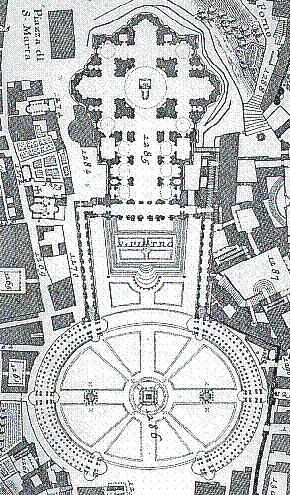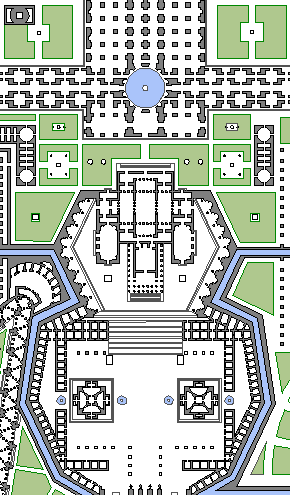| |
| |
1998.04.29
satirically reenacting the misadventures of Messalena
Piranesi places the fictitious horti Luciliani where the horti Lucullani ought to be, and places the horti Lucullani at a location further north. 2726
1998.05.10
 
e2917
e3044
1999.02.23
...a prime example of the proverbial "two sides to every story."
e2566
e2567
e2568
e2569
e274a
e2749c
e2909a
e2918a
e3084
e3102
5228a
5340
1999.07.13 22:52
the pleasure of (being lost in translation) architecture
My favorite: The configuration enters another one is connected with the both.
| |
1999.07.29 14:28
crypto-architecture
Generally, Bloomer's treatment of Piranesi's Campo Marzio follows that of Tafuri's, but she investigates some of Piranesi's other work with some originality. She is much better at finding symbolism/hidden meaning in Joyce, however, than she is in finding the same in Piranesi. For her, the (s)crypt(s) signifies a labyrinth (one she often seems lost in herself, even though it is a labyrinth of her own making!). For example, she sees the Campo Marzio plan as representing the labyrinth of the underworld, that place where the [Cartesian] grid/cage of rationality does not apply. Her [s]cryptic efforts getting into this underworld are especially worth reading because it is a thorough aggregate of good research mixed (unfortunately?) with the Tafurian and Derridian agendas (see her treatment of the CM's Terentus occulens aram Ditis et Proserpinae). Inadvertently, however, by going 'underneath' the large plan, she puts all her effort into seeking something that is not there. Essentially, she avoids the real plan itself.
1999.09.11
architecture in cyberspace?
Can anything other than light travel at the speed of light? Would those electric waves of radiation and those magnetic waves of radiation that compose light be light at any other speed? Doesn't being at the speed of light pretty much make everything else incidental?
How the speed of brain synapses compare to the speed of light?
As to electromagnetic (radiation) architecture, i.e., architecture of light, the two best examples currently on this planet are the Pantheon in Rome and Kahn's Kimbell Art Museum.
Chronosomatics suggests that the foremost electromagnetic architecture coincides with osmotic architecture--the heart being the body's center of electromagnetism and the lungs, which surround the heart, are the body's largest concentration of osmosis. The heart enters the plane of the present c. 3090. the kidneys are the body's second largest concentration of osmosis, but in the kidneys, osmosis mixes with metabolism.
1999.09.12
...the flow/current/wave pattern
...the flow/current/wave pattern of your emitted thoughts carry good highs and lows, provoking aboves and belows, and, this time at least, a co[s]mic ending[?].
...you continually apply the standards of the real world to the virtual world with what appears to be a non-investigation of those [other] qualities or standards the virtual [so far] evokes wholly on its own. My leaning toward virtual extremism is at the same time a search for some "purism" within the virtual. I don't want the virtual to merely become a reflection of the real, and that is precisely because it seems that we are actually lucky enough to be living at a time when the whole notion of a virtual realm is becoming a viable other realm--a wonderful time when it is truly possible to begin delivering something that is above all NOT more of the same [o. s.].
For what it's worth, what John just said, "Which is why some argue that reason is too slow to be useful any more. Intuition and insight are speedier, but not as fast as illogic and madness." describes perfectly my position regarding design, and even more so art. Moreover, I began to think this way back in 1983, within the first month of my working as a computer-aided architect eight hour a day, five days a week. I never expected it, but I rather quickly saw that cad (and here I must mention that I was using Intergraph, which was phenomenally superb even by most of today's standards) would be incredibly fast if the user/designer too was incredibly fast, however, the speed of the designer coming close to the speed of the computer meant a shift into spontaneous mode, a design mode rarely taught, and indeed most often severely denounced.
|